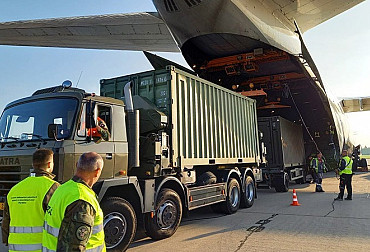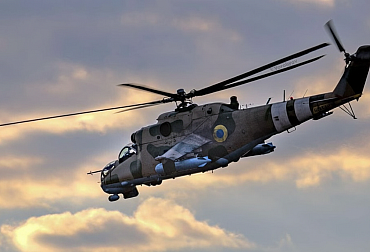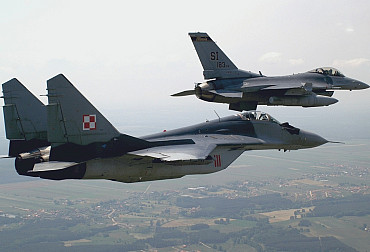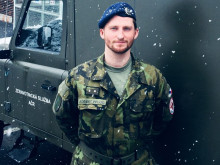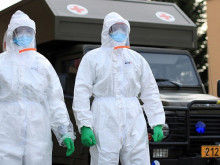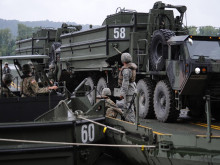Modernization of Pandur II 8x8 CZ – the main attention will be paid to the weapon station or combat turret
In its Milestone 2030, the Czech Army 2030 Build-up Concept envisages that the Czech Army Land Forces will modernize the existing and purchase new Pandur II 8x8 CZ wheeled armoured personnel carriers and the associated reorganization of the 44th Light Motorized Battalion into a mechanized battalion. The need to modernise the Pandur II IFVs in the middle of their life cycle and to purchase dozens of units in the new standard according to the original plans, which were reduced as a result of the economic crisis of 2008-2009, has been discussed for some time. The Defence Committee took up the subject at its 16th meeting last year, when it was announced that a feasibility study on the subject would be commissioned by the end of 2022 to determine how the project would be implemented by June 2023.
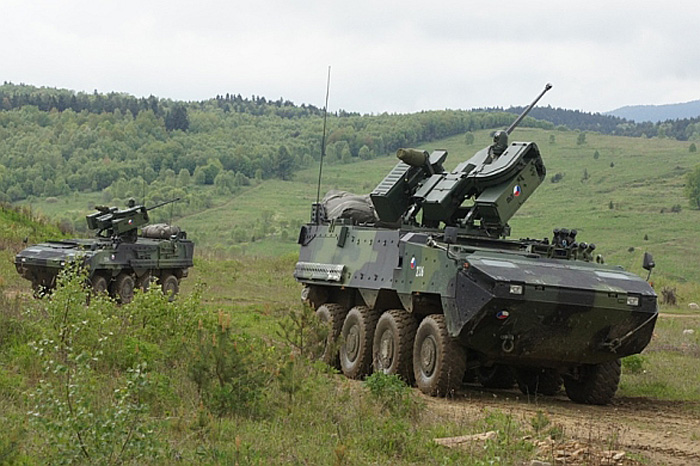
Picture: Pandur II 8x8 infantry fighting vehicles | Ministry of Defence of the Czech Republic
This will involve the modernisation of 107 existing vehicles and the purchase of 68 new vehicles. The army operates 107 Pandur IIs in the KBVP (72 units), KBV-VR (company commander's vehicle, 11 units), KBV-PZLOK (reconnaissance vehicle with radar, 8 units) and KBV-PZ (reconnaissance vehicle, 8 units) versions, for a total of 99 wheeled infantry fighting vehicles, which is equipped with an Israeli RCWS-30 weapon station with a 30 mm Mk 44 Bushmaster II automatic cannon firing 30x173 mm calibre ammunition, a 7.62 mm coaxial machine gun, a launcher for two Spike-LR ATGMs and a smoke grenade launcher.
The other 8 Pandurs at the disposal of the Czech Armored Forces are vehicles in the armoured personnel carrier version (i.e. without the weapon station with cannon and an ATGMs) in a special adaptation for engineers (KOT-Z) and for medics (KOT-ZDR). These vehicles will probably also be upgraded. The latest additions to the Pandur vehicles are the command and staff (KOVVŠ) and communications (KOVS) armoured vehicles in numbers of 6 and 14 respectively. These two types of special armoured vehicles were delivered to the Czech Army in December 2020 and will not be affected by the upcoming modernisation.
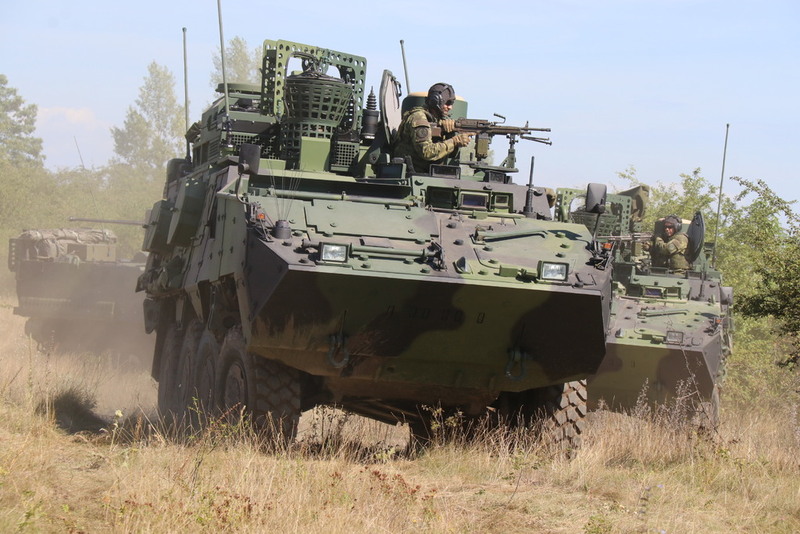
Picture: Pandur II 8x8 KOVS, KOVVŠ | Ministry of Defence of the Czech Republic
The existing RCWS-30 weapon stations on Pandur vehicles are remote-controlled, but they are first generation, they are characterised by insufficient ballistic protection (they are unmanned and neither the gunner nor the commander is directly threatened, but disabling the weapon station by hitting it even with a light weapon exposes the vehicle to additional risks), and in addition, our army is facing problems with servicing or lack of spare parts at various stages of their use. The particular vulnerability of the RCWS-30, combined with the problem described above, limited the way the vehicles could be deployed, for example, during woodland training, as it was simply not desirable to risk damage to the weapon station. A major problem with the RCWS-30, which to some extent goes against the purpose of unmanned weapon stations and turrets, i.e. primarily to protect the vehicle crew, is the fact that the gunner must leave his seat in the hull when reloading the magazine and is thus exposed to risk.
Exactly what the new weapon station or combat turret of the Czech Pandurs will look like will be seen when the upcoming feasibility study is evaluated and the specific solution selected is presented. In the past, for example, the Slovakian Turra 30 unmanned turret from the Czech company EVPÚ has appeared on the Pandur II platform. This is a turret that has been fitted to several different vehicles, including tracked IFVs such as the Šakal infantry fighting vehicle prototype, which was created by converting the BVP-2. The turret then gave rise to the prototype of the Corsac 8x8 wheeled infantry fighting vehicle on a Pandur II chassis. The turret weighs 1400 kg, just as much as the RCWS-30, and can be fitted with the same type of 30mm cannon (specifically the Corsac vehicle had a 2A42 cannon for 30x165 mm ammunition).
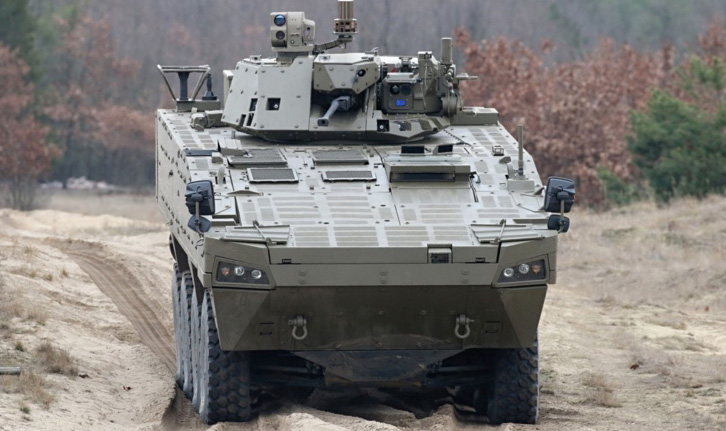 Picture: Turra 30 unmanned turret from the Czech company EVPÚ | EVPÚ
Picture: Turra 30 unmanned turret from the Czech company EVPÚ | EVPÚ
Of course, a coaxial machine gun and a launcher for the ATGMs are available at the user's option. If the RCWS-30 has an aiming range of -20° - +60°, the Turra 30 has an aiming range of -10° - +70°. The existing weapon station is without ballistic protection, and the Turra 30 has Level 1 resistance according to STANAG 4569, and can withstand 7.62x51 and 5.56x45 mm calibre projectiles.
Another possible solution, which was mentioned in connection with another ongoing acquisition/modernization project, was to equip the Pandur II 8x8 CZ with the Israeli UT30MK2 unmanned combat turret from Elbit Systems. The same type of turret, in the manned MT30 variant, would be fitted to the ASCOD II tracked IFV offered by GDELS to the Czech Army in a tender that ran from spring 2019 to summer 2022 (and was terminated and replaced by negotiations on an intergovernmental agreement with the Kingdom of Sweden, which would result in the purchase of 210 CV90 MkIV IFVs). The usefulness of a related solution for both Czech infantry fighting vehicles, i.e. tracked and wheeled, including the same type of main weapon and of course the same ATGMs, was an important and often emphasised argument for the choice of ASCOD vehicles at the time.
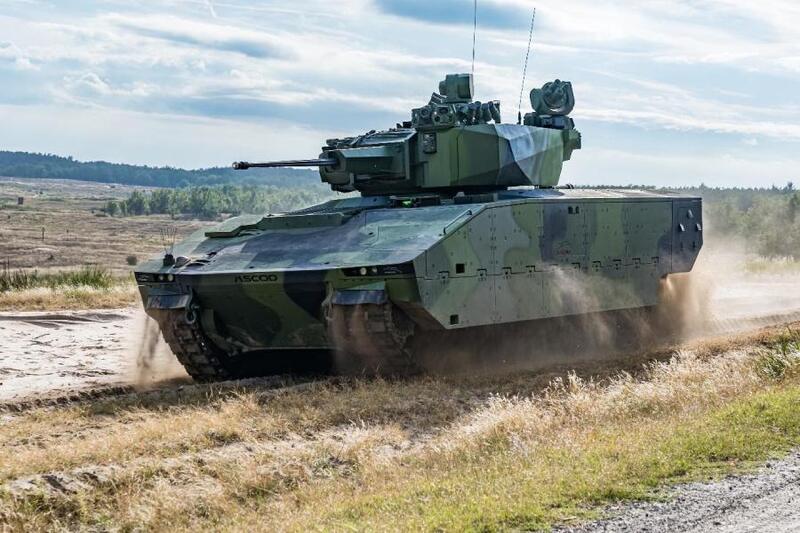 Picture: Israeli UT30MK2 unmanned combat turret on an ASCOD II tracked IFV | Elbit Systems
Picture: Israeli UT30MK2 unmanned combat turret on an ASCOD II tracked IFV | Elbit Systems
The same type of turret was used, for example, for the PIRANHA 5 wheeled armoured vehicles for the Romanian army (also from GDELS). The UT30MK2 again carries the Mk 44 Bushmaster II automatic cannon and coaxial machine gun, the launcher for the ATGMs can be fully integrated, and the modularity of the turret offers a number of different combinations and solutions, including several levels of armour protection (this can be Level 2, 3, 4 or 6 – the highest value means resistance to 30 mm anti-tank projectiles at a range of 500 m; however, this level of protection would undoubtedly already be too heavy for the relatively light Pandur chassis).
John Cockerill can offer another solution in the form of its Cockerill 3000 series of turrets, which can be fitted, with minimal modification, with 25, 30, 35, 40 and 50 mm calibre automatic weapons, as well as 90 or 105 mm calibre guns, to create fire support vehicles. Here, too, anti-tank guided missiles and a coaxial machine gun are standard. The modular system boasts easy main gun replacement and common configuration, which bring relatively lower operating costs and operational flexibility.
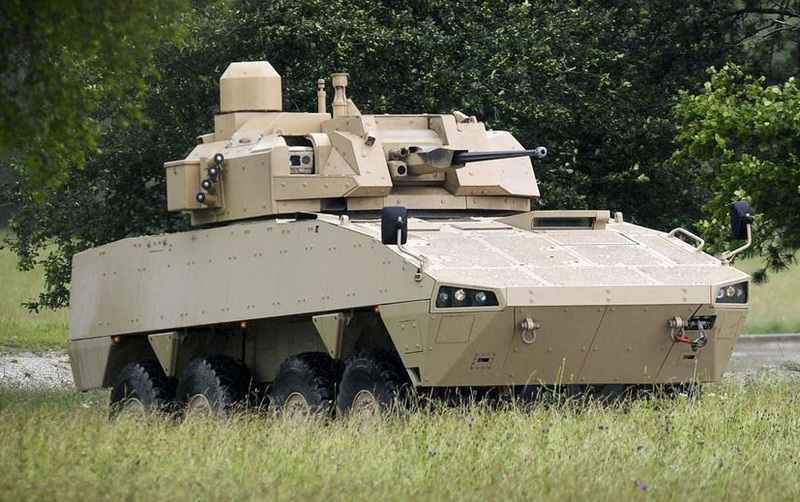 Picture: Cockerill 3030 | John Cockerill
Picture: Cockerill 3030 | John Cockerill
Unlike the previously discussed solutions for the self-propelled mortar, which are not in abundance on the market, there are relatively more unmanned and manned turrets or weapon stations for 30mm automatic cannons and there will be many to choose from. According to the deputy for acquisitions, Lubor Koudelka, the feasibility study will also deal with the harmonisation of equipment for wheeled and tracked IFV (in their case, the ministry expects the contract to be signed by the end of May next year, so by the time the Pandur II modernisation study is completed, the final solution will already be known). In contrast to the Slovak Armed Forces, the Czech tracked IFV should have a main weapon of 30 mm calibre, one of the main arguments for this solution being the compatibility of ammunition with the wheeled IFV. If a change in this respect (to 35 mm calibre or more) is made in the future, it will probably be a mid-life upgrade of the tracked IFV – by which time the Army will be looking for a replacement for the Pandurs.
















